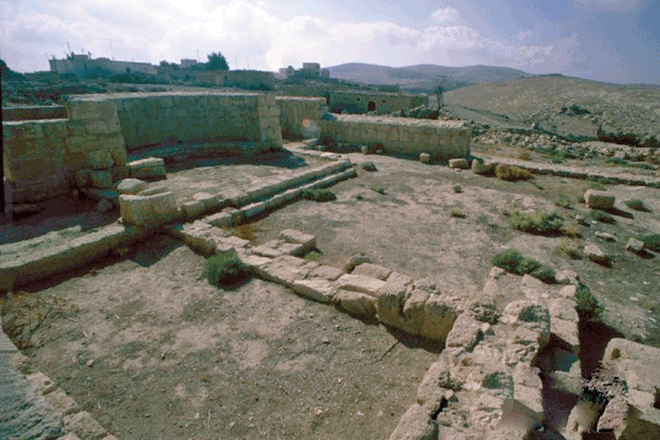Record added successfully


The ancient stronghold of Machaerus is a prominent archaeological site located approximately 25 kilometres southeast from the mouth of the Jordan River.
“The site was discovered by the German explorer Ulrich Jasper Seetzen [1767-1811] in 1807, and he was the first to identify the site as the ancient Machaerus ‘sword’, mentioned by Roman geographers and historians during the 1st century AD,” noted Jordanian archaeologist Mohammad Najjar.

The site is a sacred place for followers of the two monotheistic religions — Christianity and Islam. The New Testament (Mark 6:20, Mathew 14:1-12) and other historical sources (Josephus Antiquities 18.5.2) refer to the site as “the place where John the Baptist was imprisoned and beheaded.” The Baptist is known to Muslims as Prophet Yahya ibn Zakaria.
Originally, fortresses, including Alexandrium, Doq, Cypros, Hyrcania and Machaerus, were built in the area by the Hasmonaean monarch Alexander Jannaeus, at the beginning of the 1st century BC to defend his kingdom from all sides.
“The latter one Machaerus [the sword] was built as an outpost to invade the Nabataean kingdom. At that point in time, the entrance to the castle was on its southwest side. The castle was later completely destroyed by the Roman Legio X Fretensis under the command of Lucilius Bassus in 57 BC,” Najjar said, adding that, during the 20s BC, Herod the Great rebuilt the fortress/palace at Machaerus and included the lower city on its eastern slope.
“The fortress could be accessed by staircase that connected the castle/palace with the lower city. Josephus described the site as an elevated rocky hill that is very hard to subdue. The fortress/palace at the summit of the hill was protected on three sides by towers and on the fourth side by the lower town and its fortifications,” Najjar said.
The complex includes a gate house located at its eastern side that leads to a long corridor, connecting the gatehouse with the western tower, the archaeologist said, adding that a peristyle courtyard and a triclinium are located on the north.
“A courtyard and a bath house are located on the south of its storerooms. The size of the complex is approximately 6000 square metres, while the size of the lower town is approximately 12,000 square metres. The Royal courtyard was enriched with porticoes on 28 Doric orders from four sides,” Najjar said, noting that the triclinium (dining tables with couches) was a two-storey building.
Furthermore, the approximate height of the building was 10 metres, while 12 Ionic orders lined the entry hall to the bath house.
“It’s noteworthy that the lower parts of both Doric and the Ionic columns were decorated with red paint. The mosaic panel fragments discovered in this bathhouse are the oldest mosaic panels found in Jordan,” the scholar emphasised.
Meanwhile, in the fourth year of the 1st century BC, Herod Antipas became governor of the region after the death of his father Herod the Great.
“The first Antipas maintained good relations with his Nabataean relatives, since he was the son-in-law of the Aretas IV the king of the Nabataeans. But this relationship worsened after Antipas divorced his Nabataean wife, and the war between the two countries began, resulting in another destruction of the castle in 30 AD. The castle was rebuilt to be demolished again by the Romans in 72 AD,” Najjar said.
A team from the Hungarian Academy of Arts has been working at the site since 2009, and they managed to re-erect two columns there.
“An Ionic column was anchored to a stepped platform in the bathhouse dressing room using a stainless steel plug. The same procedure was repeated with the Doric column in the peristyle courtyard. Unfortunately, these columns were recently knocked down by vandals,” Najjar said, adding that archaeological excavations at the outer perimeter of the site might reveal additional architectural elements and the furnishing of the palace that was thrown by the Romans to the sides of the site.
--
Source: The Jordan Times.